There are plenty of yellow birds in Ohio that call the state home, but identifying the exact bird species that you observed can be challenging.
More than 440 bird species have been observed in the state of Ohio. Many of the birds that live in the state have yellow coloration in their plumage, making it difficult to confirm the exact species that you saw.
This article offers a thorough examination of 23 species of yellow birds in Ohio, so continue reading to find the species that you observed!
Table of Contents
Vireos
There are six expected vireo species in Ohio, with two being considered yellow birds in Ohio. Vireos are insect-eating songbirds that leave during the cold winter months.
Philadelphia Vireo
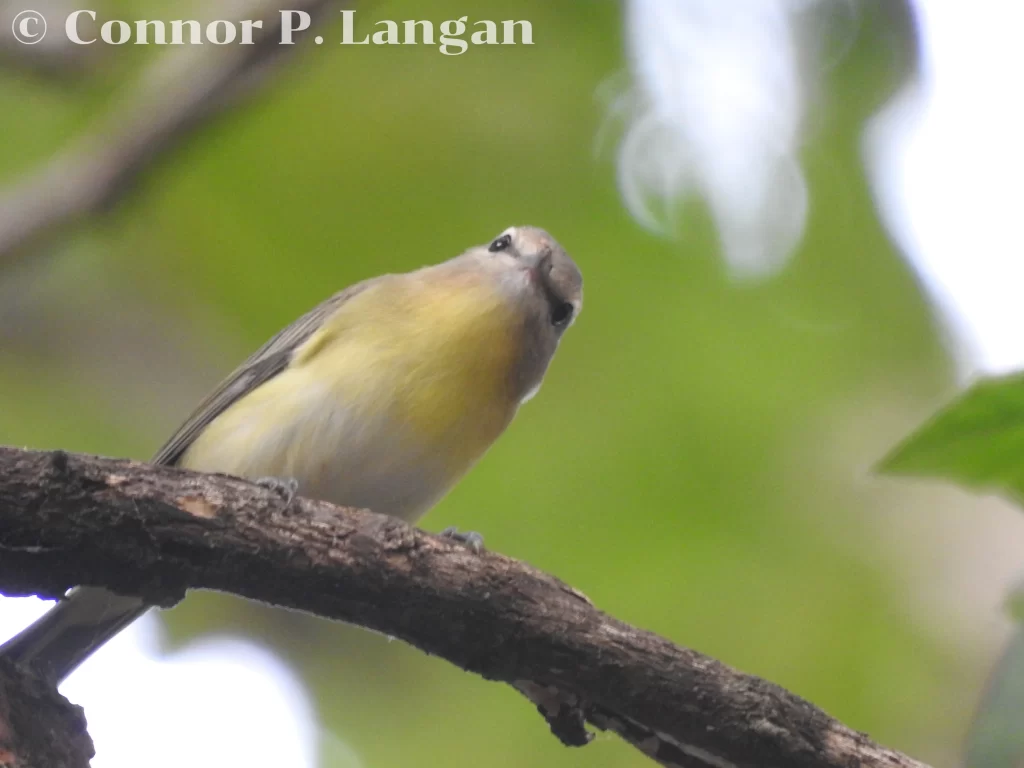
Philadelphia Vireo can vary significantly in their coloration. Some birds are largely gray overall with a minimal amount of yellow, while other birds show a considerable amount of yellow in their plumage. Be sure to look closely at a possible Philadelphia Vireo. The similar Warbling Vireo can be difficult to distinguish.
Philadelphia Vireos do not nest in Ohio, but they pass through the state on the journey to their breeding grounds. They survive in forested areas where they refuel and rest during migration.
Yellow-throated Vireo
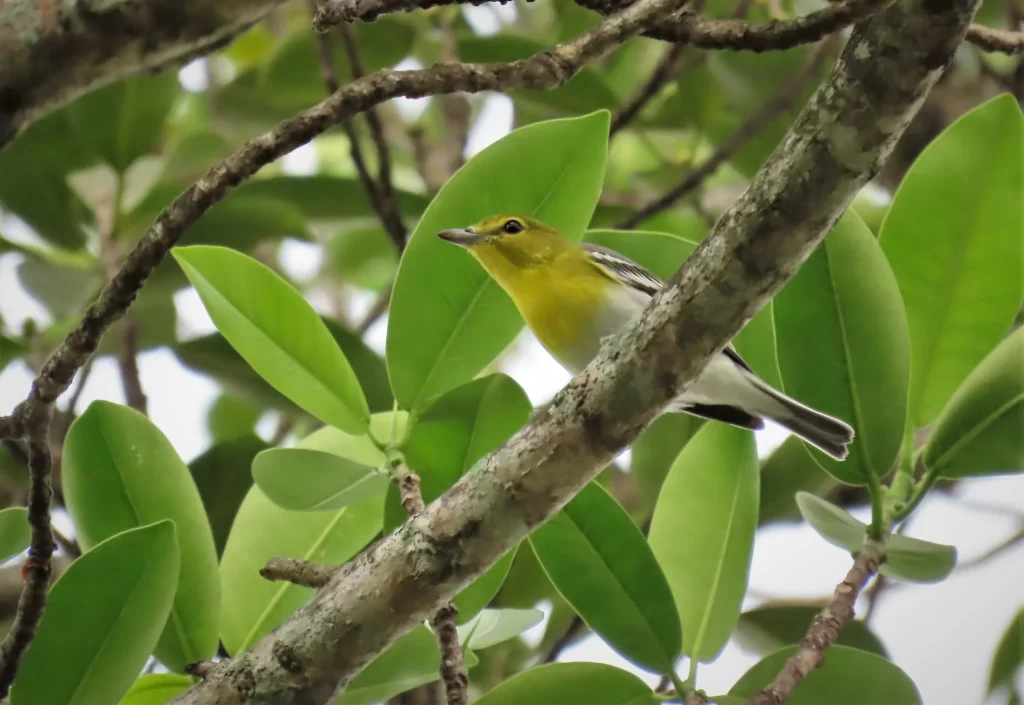
A small songbird with a sizable beak, Yellow-throated Vireos have stunning plumage that includes colors such as blue, green, and yellow. One would think that these colors would make them stand out. However, these yellow birds in Ohio are difficult to detect in their forested habitats.
Look and listen for Yellow-throated Vireos as they forage and sing from parks, forest edges, and forest clearings. They are readily found during migration and the summer breeding season.
Finches
Ohio is home to nine finch species, with two of them being classified as yellow birds in Ohio.
American Goldfinch

These small yellow finches in Ohio are among the most common residents in the state. Male American Goldfinches are a bright yellow color during the breeding season, but in the fall, these birds revert to a drab green-brown color.
American Goldfinches in Ohio can show up in a wide variety of locations. Watch for them in neighborhoods, parks, ditches, fallow fields, and forest edges. You can attract them to your backyard by offering bird feeders.
Evening Grosbeak
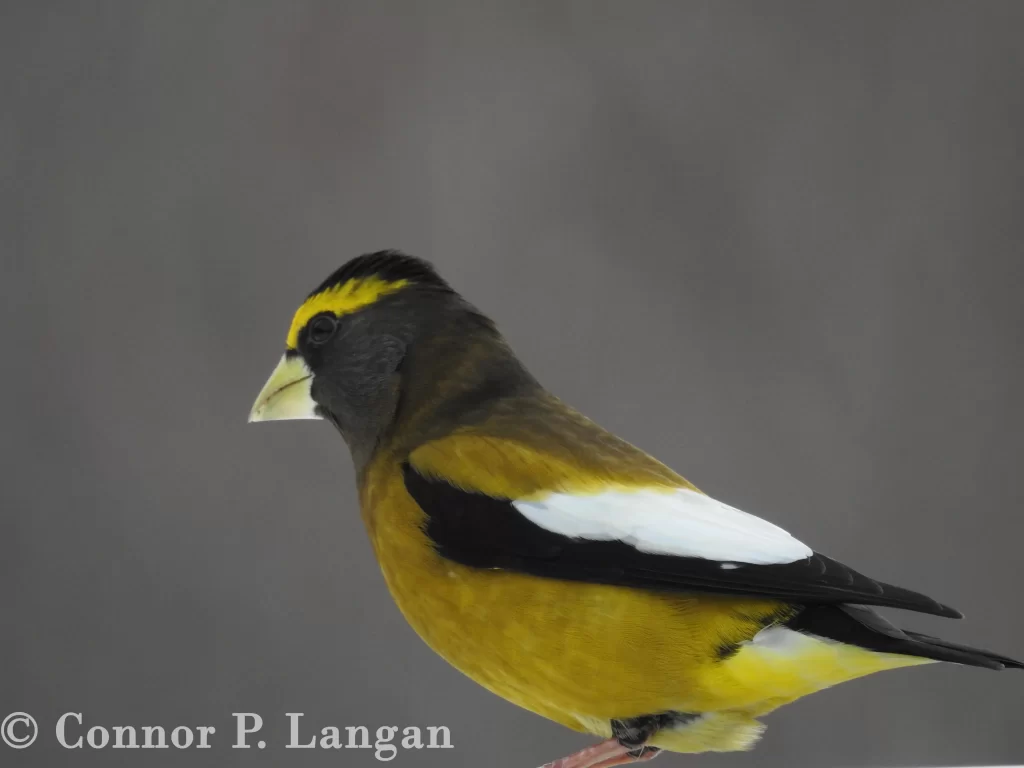
Evening Grosbeaks are a treat to see in Ohio, as the state is not within their expected range. This species can more easily be found in states like Pennsylvania and Michigan, but they are rare in states such as Ohio.
Watch for them to show up along the Lake Eerie shoreline during migration. In an irruption year, these birds head further south than they typically would in an effort to find food. Evening Grosbeaks will visit bird feeders, so watch for these colorful finches to make an appearance in your backyard.
Blackbirds
The blackbirds of Ohio can be found in a variety of habitats. The state is home to one common species of yellow blackbird, while two uncommon species of yellow blackbirds can also be found.
Eastern Meadowlark
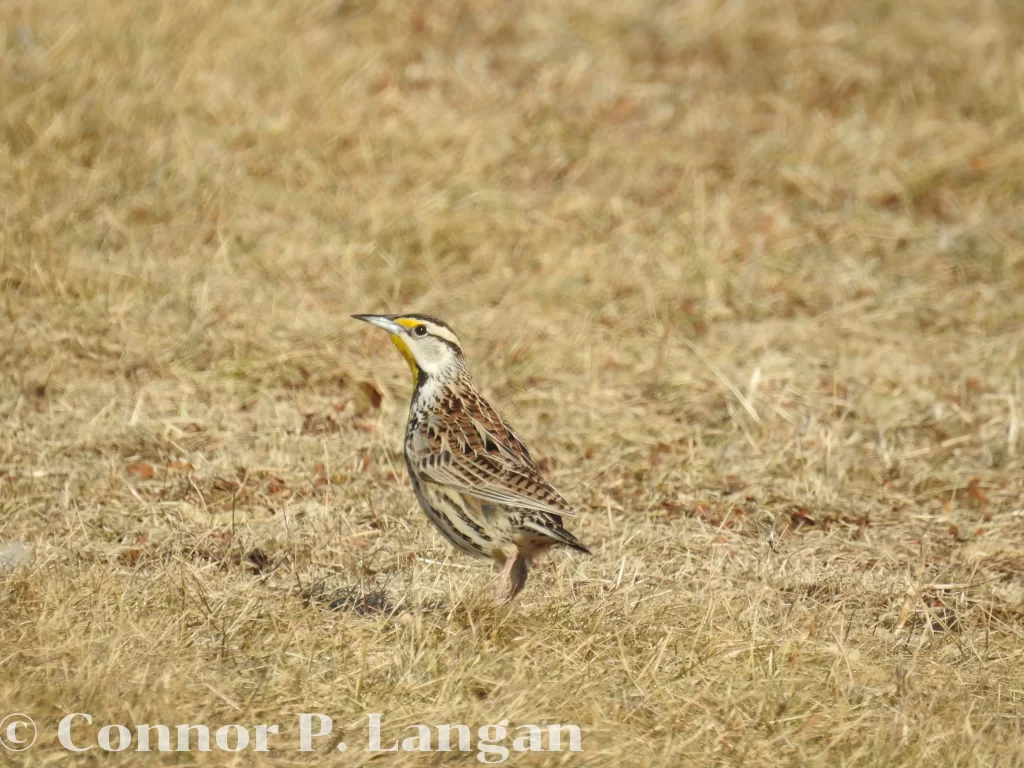
These blackbirds are the dominant meadowlarks in the state. Therefore, birders can assume that when they see a meadowlark, it is very likely to be an Eastern Meadowlark.
Eastern Meadowlarks are widespread in a variety of habitats. Look for them in prairies, ditches, airports, and any other habitats that support several acres of grass.
Western Meadowlark
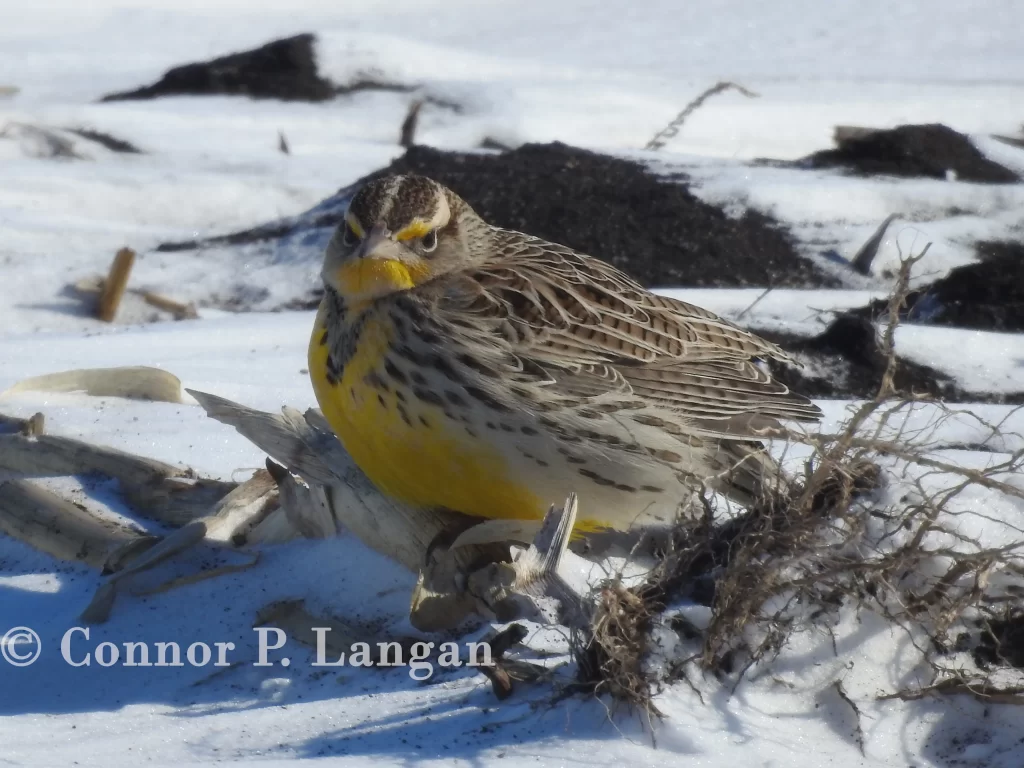
Western Meadowlarks are an uncommon sight in Ohio, with the overwhelming majority of meadowlarks in the state being Eastern Meadowlarks. Nonetheless, these yellow birds in Ohio are an annual sight, with most birds being found in the northwest portion of the state.
The best way to detect a Western Meadowlark is by listening for its song, which is distinctly different from that of an Eastern Meadowlark. These Ohio yellow birds may be found adjacent to rural roads, along lakeshores during migration, and in tracts of grassland or prairie.
Yellow-headed Blackbird
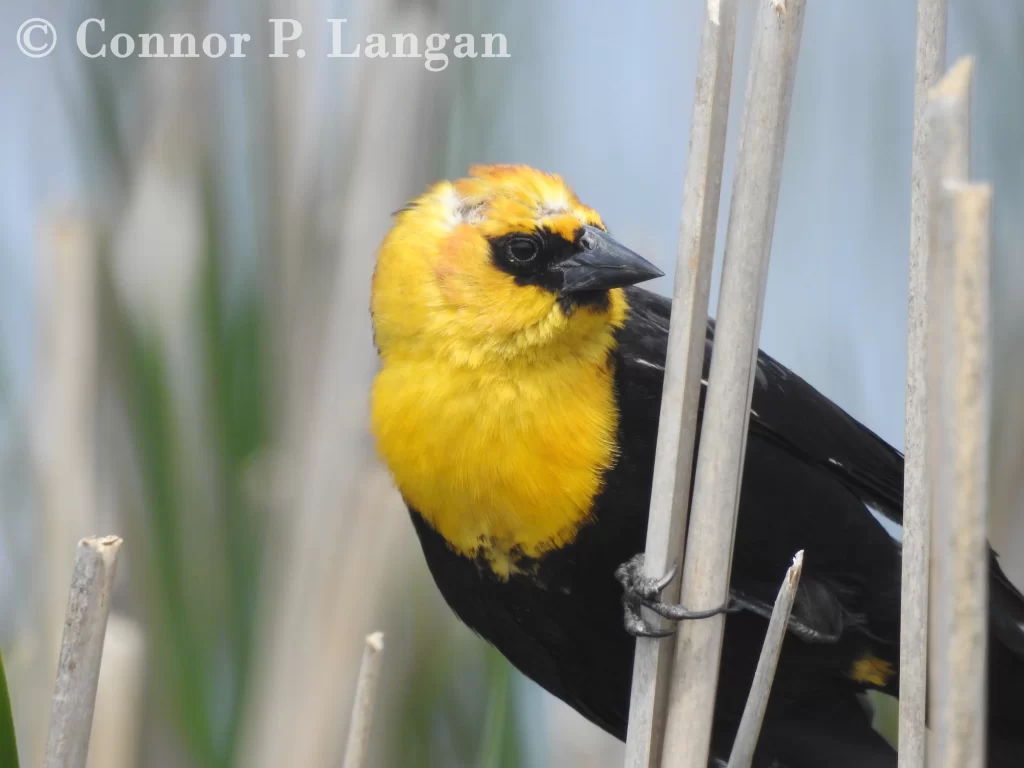
This large yellow and black bird in Ohio is an uncommon resident, with birds being found at scattered locations across the state. They may appear along the shores of Lake Eerie during migration, or they may show up in a large group of Red-winged Blackbirds or Common Grackles.
Though these black, white, and yellow birds are sizable, they can be difficult to detect in their native habitats. Listen for the male’s piercing, unmelodic song if you hope to find one in Ohio.
Warblers
There are plenty of warblers with yellow plumage, and Ohio is home to more than a dozen species that are yellow. The state is one of the best places to observe migrating warblers in the United States.
Blue-winged Warbler
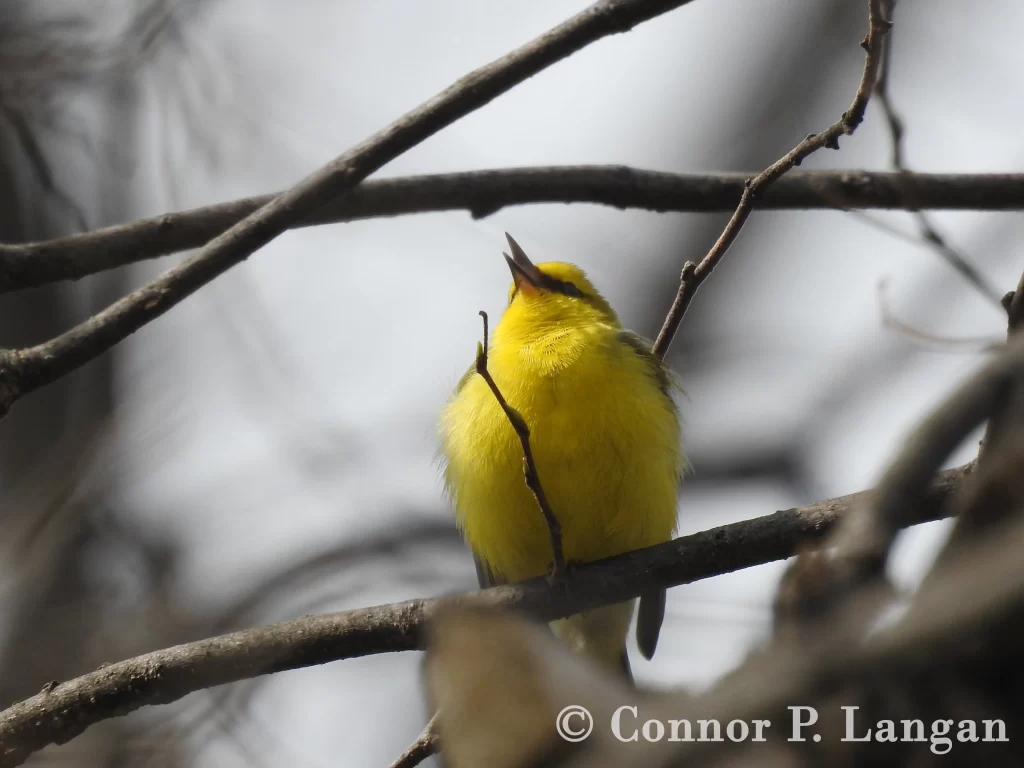
Blue-winged Warblers can be found throughout the Buckeye State during migration. However, this Ohio yellow bird is most abundant in the Appalachian Mountains in the state’s southeastern corner during the summer breeding season.
Look for Blue-winged Warblers in fields that have been fallow for long enough to develop shrubs and young trees. In the Appalachian Mountains, this bright yellow bird in Ohio may be found along forest edges and openings in forests.
Canada Warbler
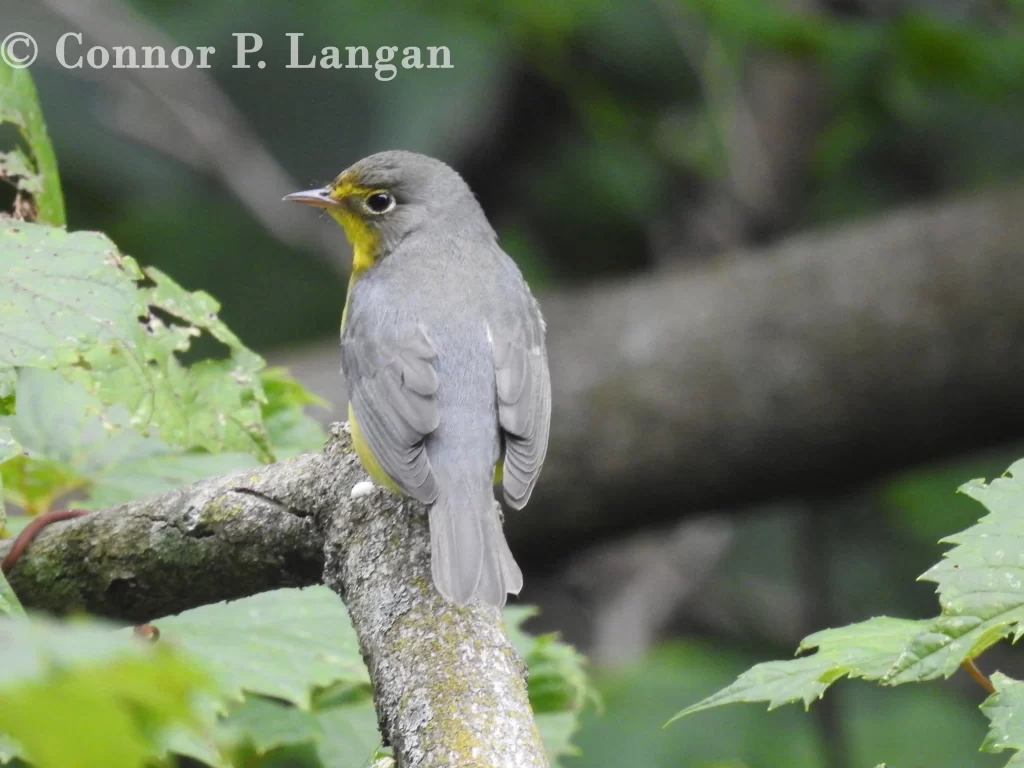
Thousands of these yellow bird species migrate through the state annually as they travel northward to places such as Michigan and southeastern Canada for breeding.
Canada Warblers are among the last songbirds to migrate northward in May and one of the first to head south in August. Therefore, be sure to head out to a forested area so you can observe them in the short time in which they pass through.
Cape May Warbler
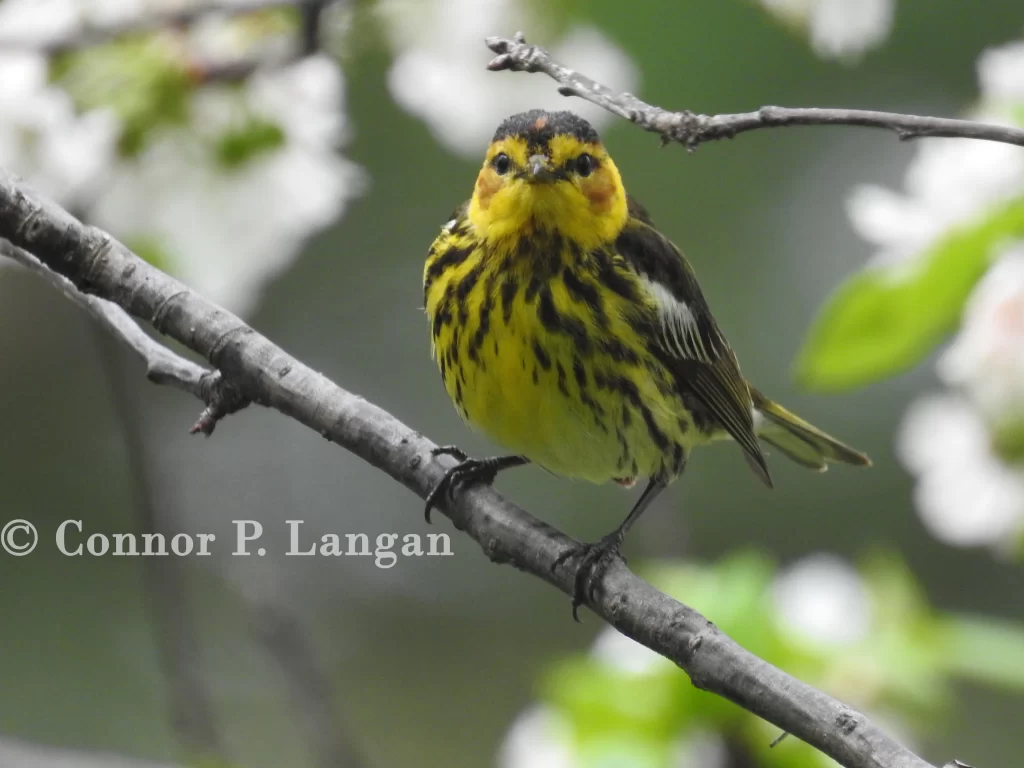
Cape May Warblers are expected migrants, but they are a yellow bird in Ohio that does not nest in the state.
Cape Mays often forage in medium to high locations within trees, so you may have to look to the treetops to observe them. They enjoy foraging in flowering trees or shrubs, so be especially vigilant when passing by such plants in the spring.
Common Yellowthroat
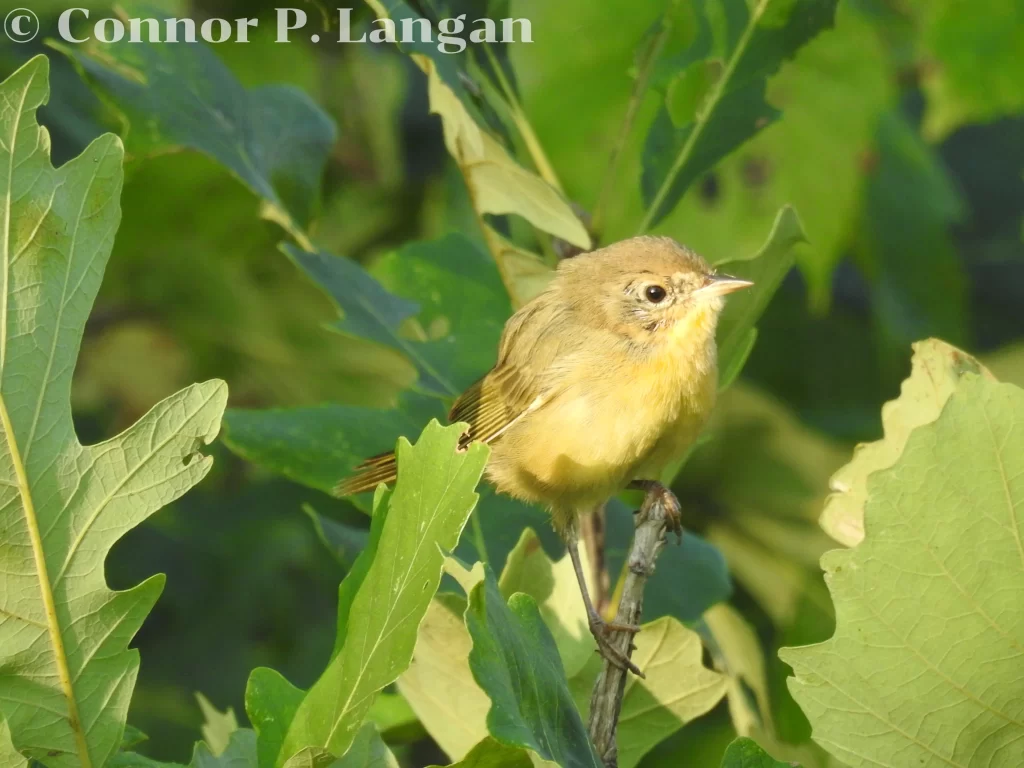
This species is one of the most numerous breeding warblers in Ohio. Look and listen for Common Yellowthroats in marshes, wet ditches, and lakeshores with reeds or cattails.
Common Yellowthroats are heard far more often than they are seen. Listen for the “witchety-witchety-witch” song of males when you are hiking around a marsh.
Connecticut Warbler
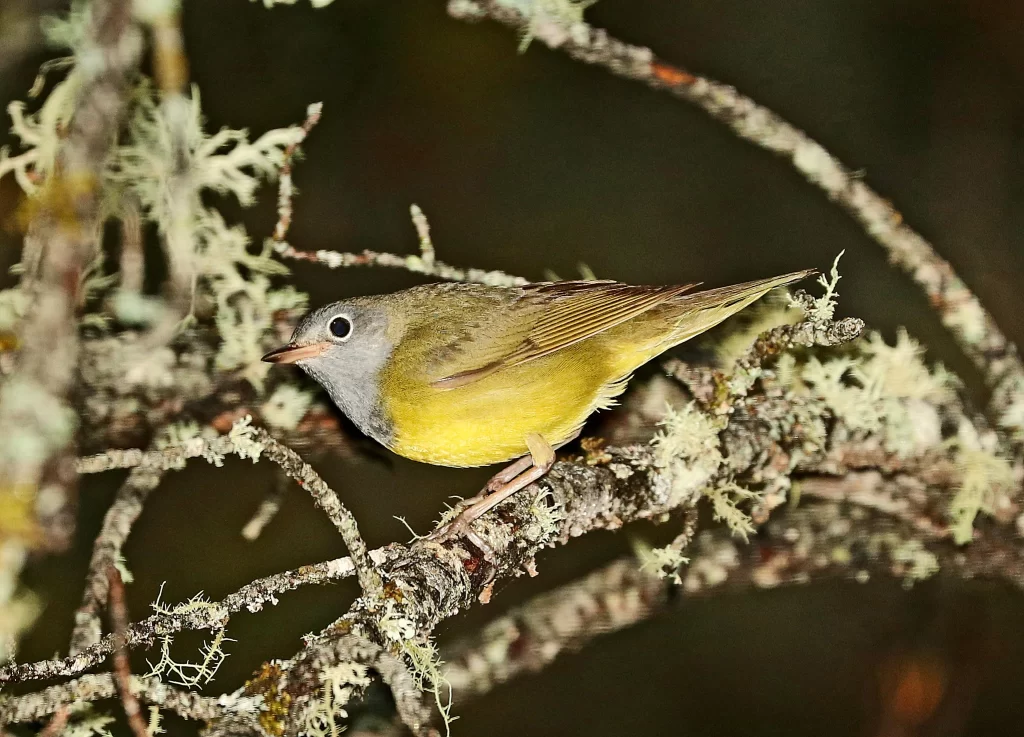
A stealthy migrant that keeps a low profile during all times of the year, Connecticut Warblers are a notoriously difficult creature to observe.
These yellow birds in Ohio do not breed in this part of the country. Instead, they travel through the state on their migratory routes each spring and fall. They are incredibly difficult to detect. However, those who are lucky may find one of these birds skulking in dense forest vegetation as they search for insects.
Hooded Warbler
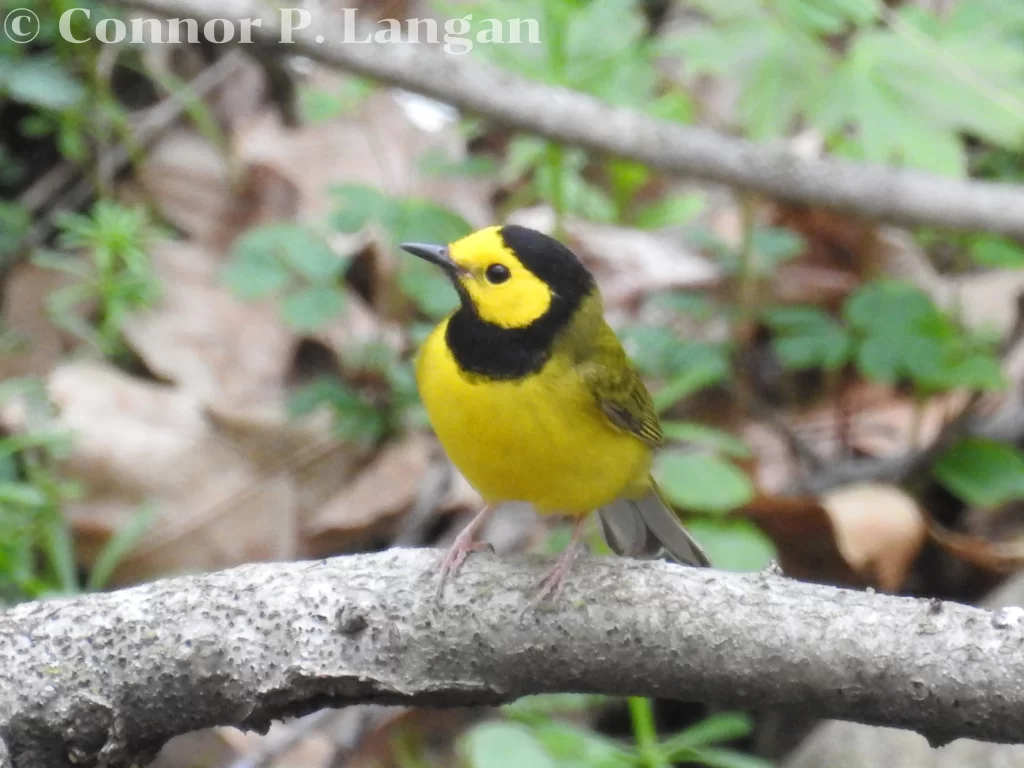
Hooded Warblers are attractive migrants and breeders throughout the state. While Hooded Warblers are uncommon in western Ohio, they breed in strong numbers in the east. Strongholds include the Wayne National Forest and the Zaleski State Forest.
Those searching for these yellow and black birds in Ohio will want to search mature forests with a fairly open understory.
Kentucky Warbler
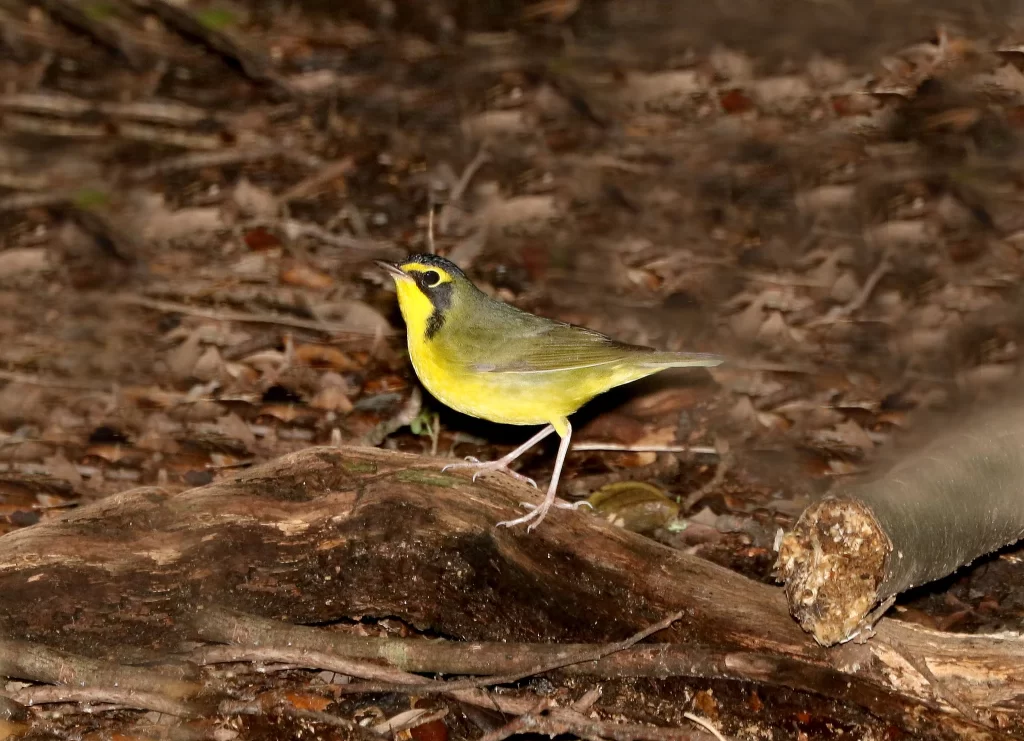
This black, green, and bright yellow bird feels safest when it is foraging in low, dense vegetation in the understory of forests. This yellow bird in Ohio keeps a low profile. Luckily, they are readily found in locations like Wayne National Forest, Zaleski State Forest, and Tar Hollow State Forest.
Though they are a regular breeder in the forested hills of southern Ohio, they are largely absent from the north. They are especially scarce in the northwest.
Magnolia Warbler
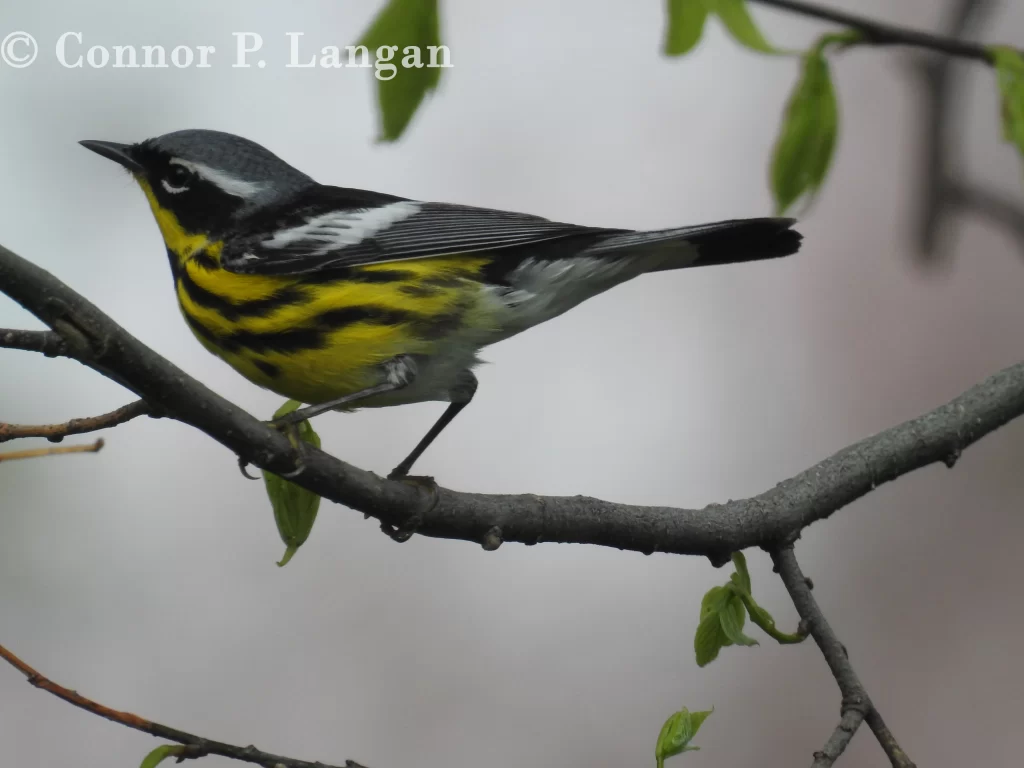
This elegant warbler with a black mask is readily found in migration. Magnolia Warblers breed in a few locations in Hocking County in the summer. Otherwise, individuals seen in the state during summer are likely migrants.
Look for Magnolia Warblers in tracts of forest, woodlots, parks, and in trees and shrubs along lakeshores if you want to find these Ohio yellow birds.
Mourning Warbler
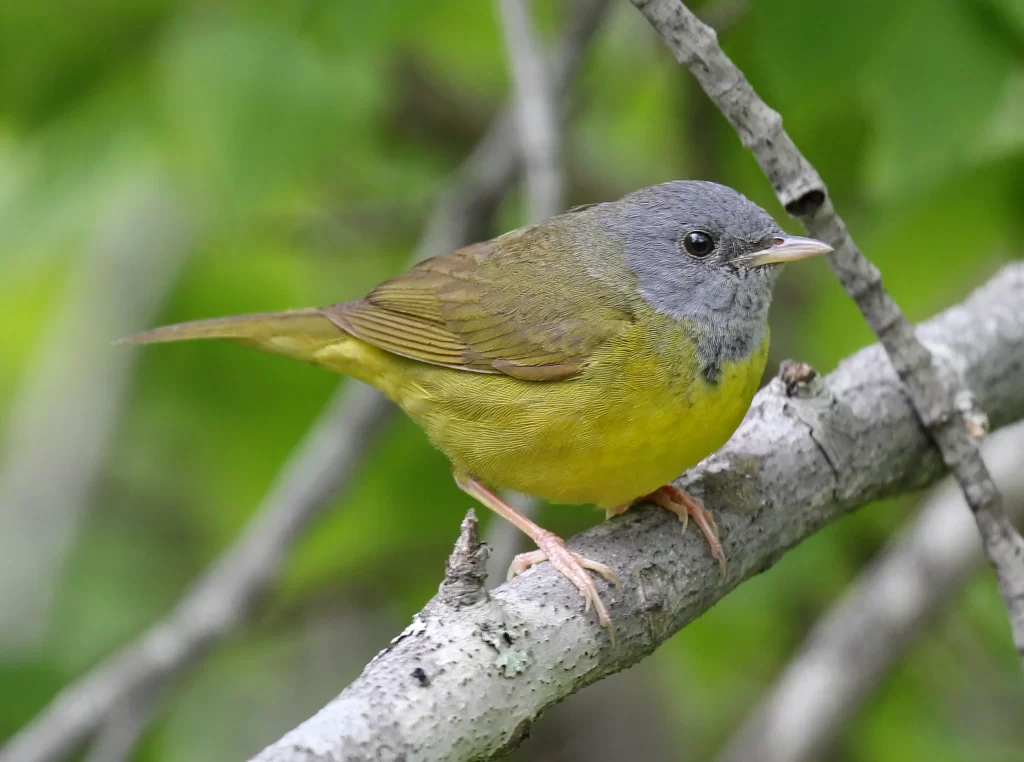
An elusive Ohio yellow bird of the understory, birders should consider themselves lucky if they spot a Mourning Warbler.
Mourning Warblers are found in the vegetation making up the understories of parks, forests, and woodlots. They do not breed in Ohio, but they migrate through the state annually.
Nashville Warbler
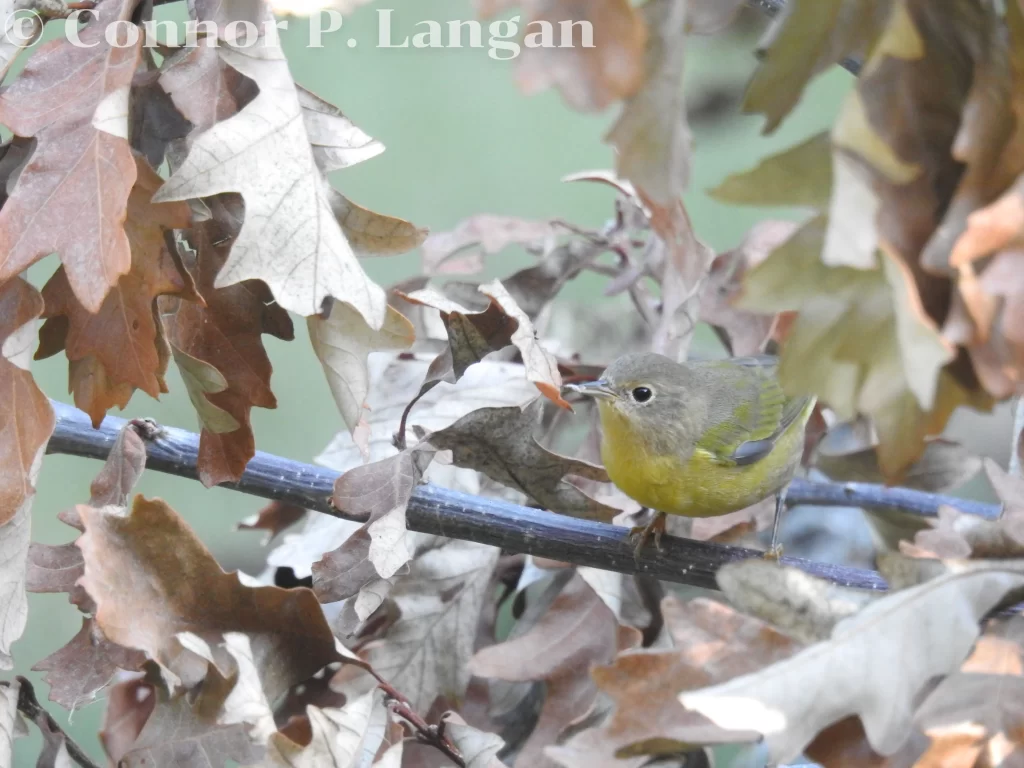
Nashville Warblers do not breed in Ohio, but they are a plentiful migrant. These yellow birds in Ohio can easily be found in May and from mid-August through early October.
Males and females are both considered to be Ohio yellow birds, as there are few differences between the sexes. Nashville Warblers can be found anywhere with trees during migration, but they also may show up in grassy areas with few trees.
Palm Warbler
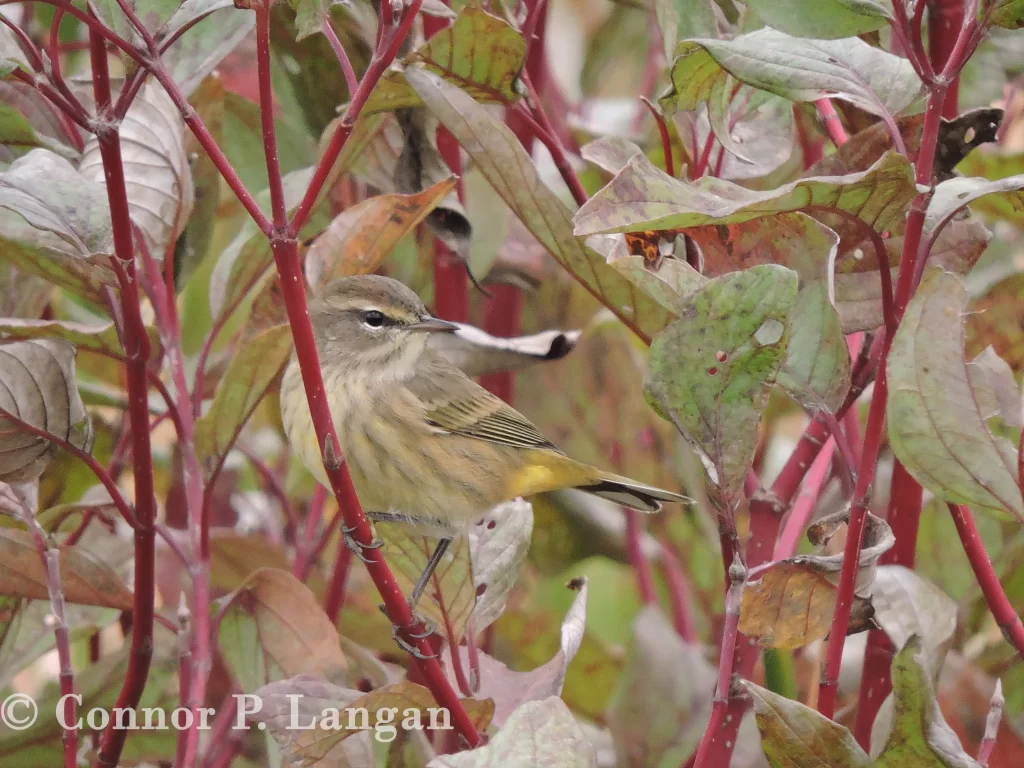
Palm Warblers are common warblers of Ohio. However, they do not breed in the state. One of the first warblers to migrate in the spring, birders can expect to start seeing them as early as mid-April.
Two subspecies of Palm Warbler show up in Ohio – the paler Western subspecies is distributed throughout the state in migration, while the more stunning Yellow subspecies are more likely to appear in the east. During migration, look for them along lake shores, in parks, and anywhere else with a variety of vegetation.
Pine Warbler
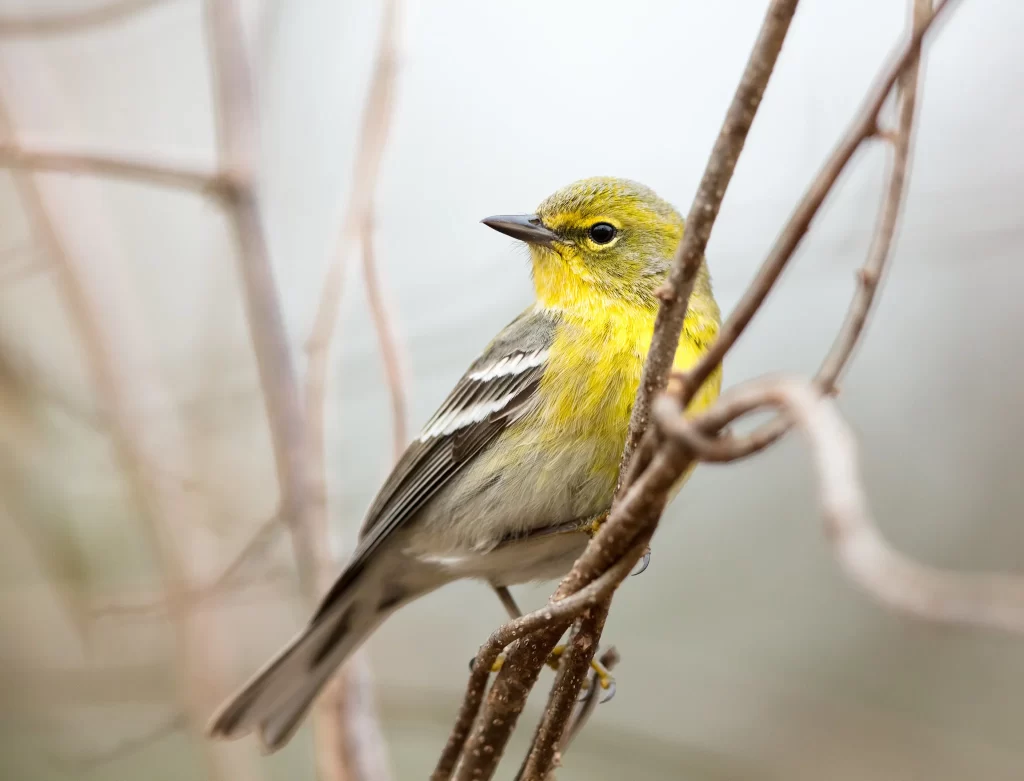
This feathered animal is both a migrant and breeder in the state. Pine Warblers primarily breed in the forests of southeastern Ohio, but this yellow bird in Ohio also breeds in areas dominated by pine in the northeast. They are uncommon breeders throughout the rest of the state. Pine Warblers travel to spend the winter in places such as Georgia.
They are true to their names, so look for these birds in pine forests or mixed forests with pine.
Prothonotary Warbler
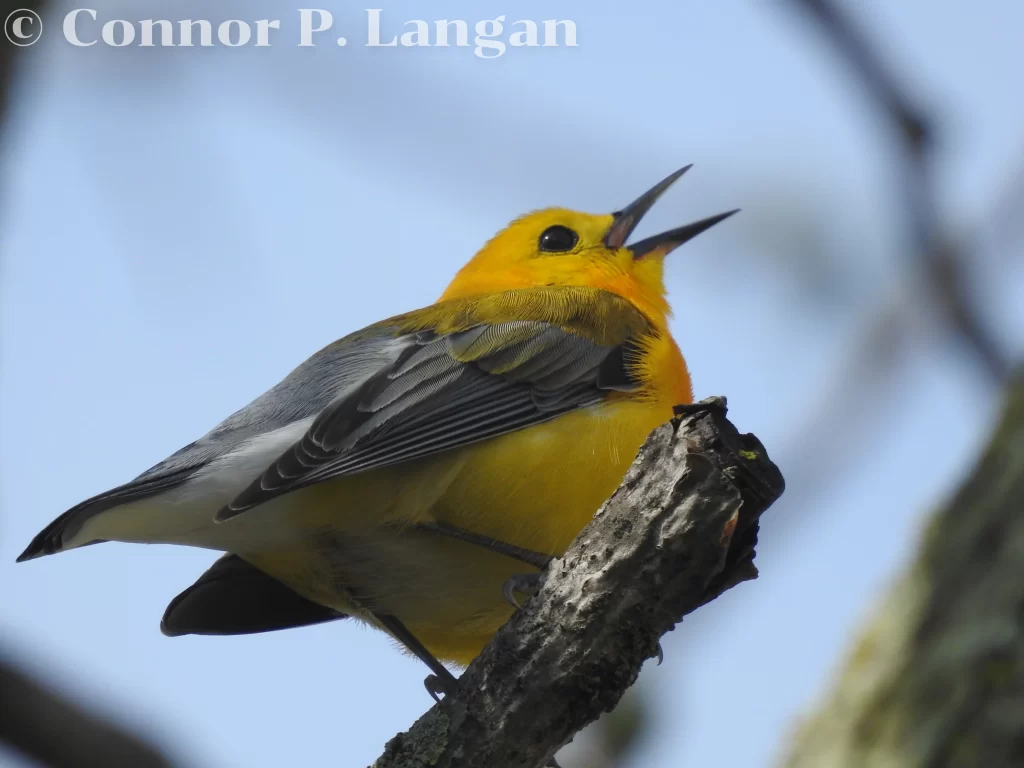
Perhaps the most beautiful of the yellow birds in Ohio, Prothonotary Warblers have unique lifestyles, as they live in swampy conditions and nest in tree cavities.
They breed in flooded forests, and they are almost always found near water. Learning its subtle song can help you locate this bright yellow bird in Ohio.
Wilson’s Warbler
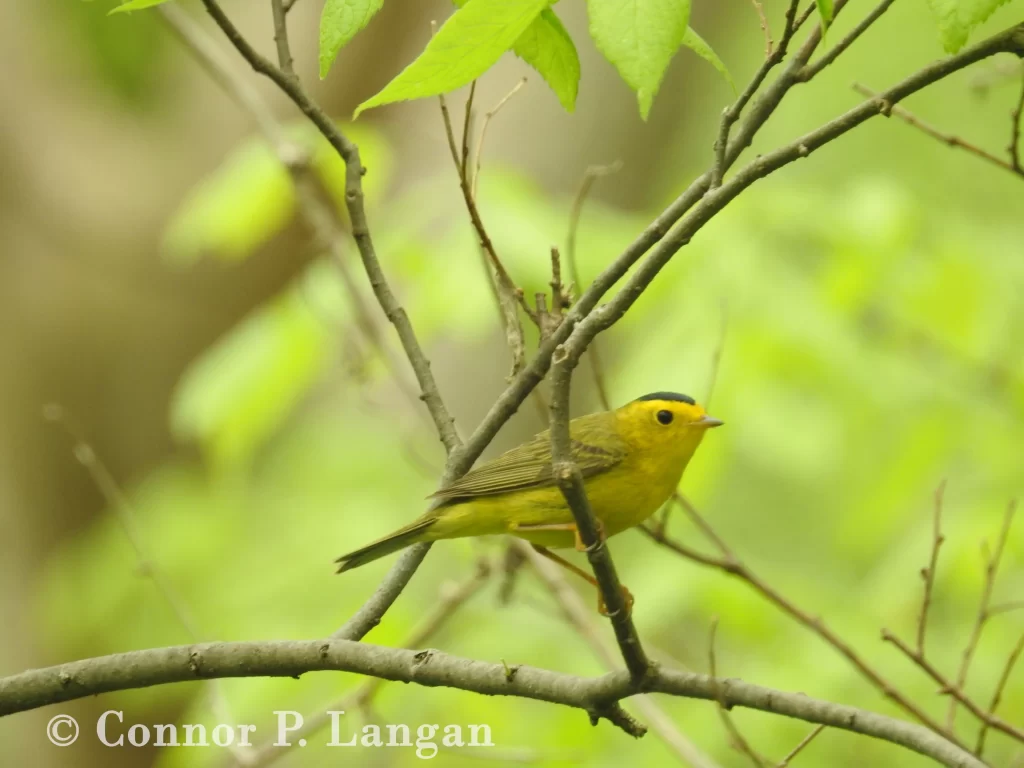
A numerous migrant, Wilson’s Warblers are found in a variety of habitats throughout migration.
Though they do not breed in the state, birders merely have to travel to a park or forest preserve in May or late August through September if they hope to have a chance to view them.
Yellow Warbler
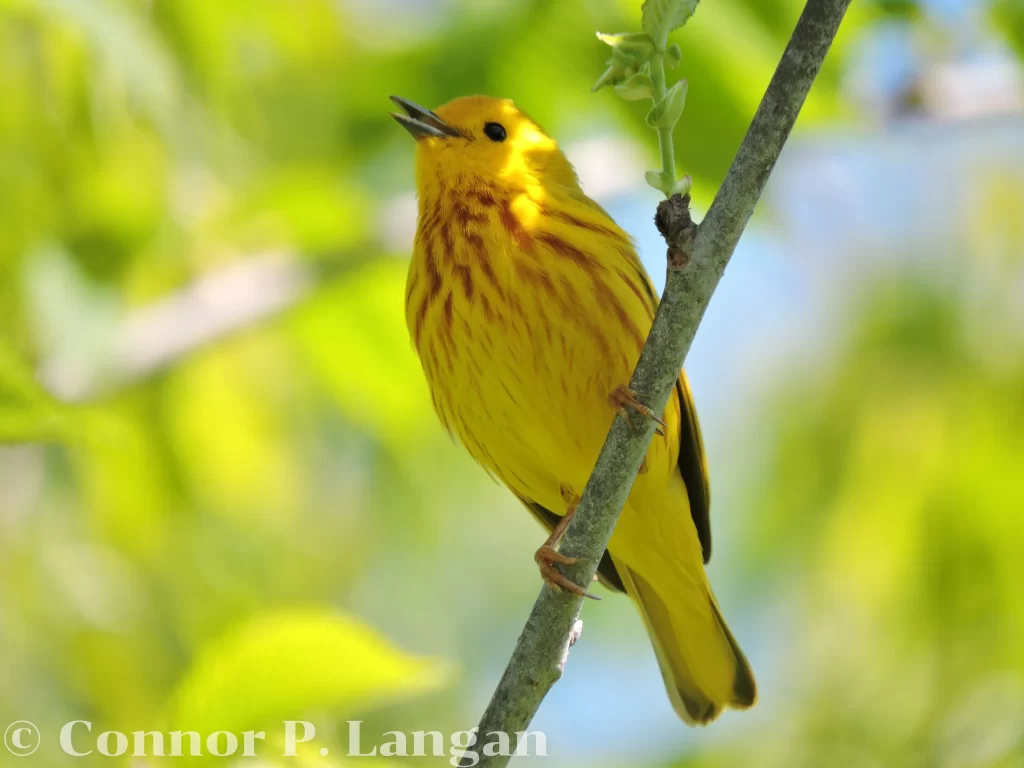
Yellow Warblers readily breed throughout the state. Don’t look for this yellow and black bird in Ohio in dense stands of timber. Instead, look for Yellow Warblers in open habitats that feature a few large trees on the landscape.
These yellow birds in Ohio may show up anywhere during migration, so watch for Yellow Warblers along lakeshores and in woodlots, parks, and forests.
Yellow-rumped Warbler
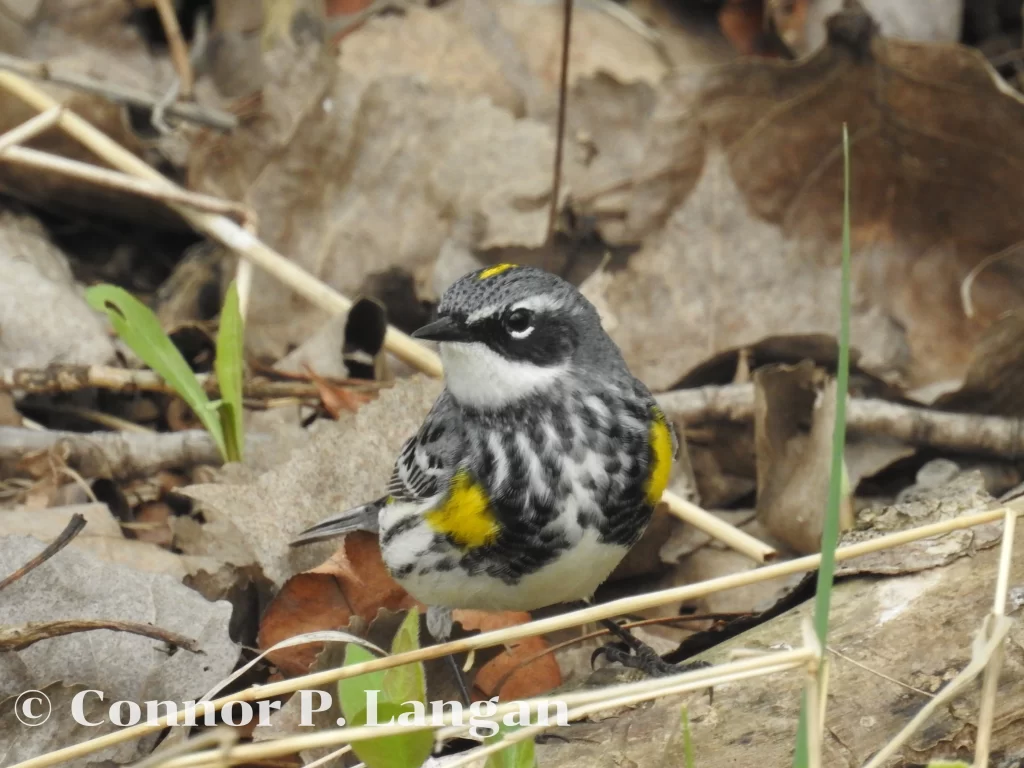
Yellow-rumped Warblers are the most common migrant warbler in America. Although they are not very yellow, they have been included on this list thanks to their namesake yellow rumps.
Yellow-rumps are known to eat berries in addition to insects, so they may overwinter. They can appear anywhere during migration, so keep your eyes open for their bright yellow rumps!
Cardinals and Grosbeaks
Seven species in the cardinal and grosbeak family are regular visitors to Ohio, with only one considered to be among the yellow birds in Ohio.
Dickcissel
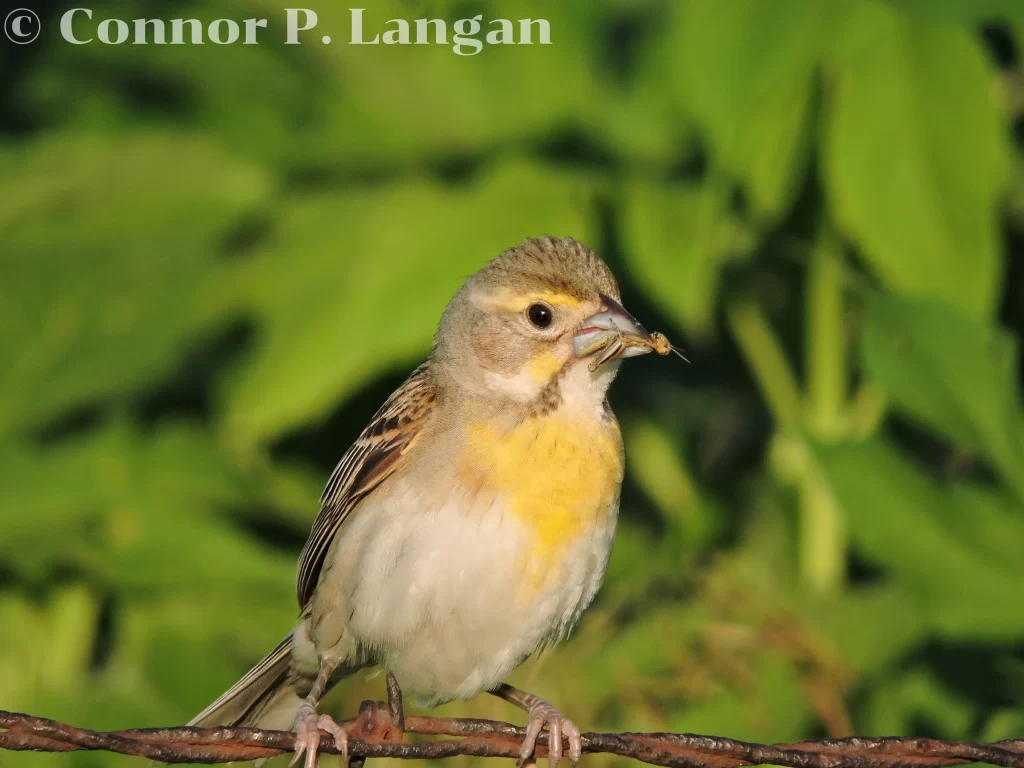
Dickcissels are a regular summer sight in western and central Ohio, but they are largely absent from the eastern part of the state. Look for Dickcissels in areas with pasture, prairie, or other tracts of grasses.
Though you may not be able to tell from looking at them, Dickcissels are in the same family as Northern Cardinals and Rose-breasted Grosbeaks. Like both of these species, these birds with funny names have a large beak that they use to eat seeds.

